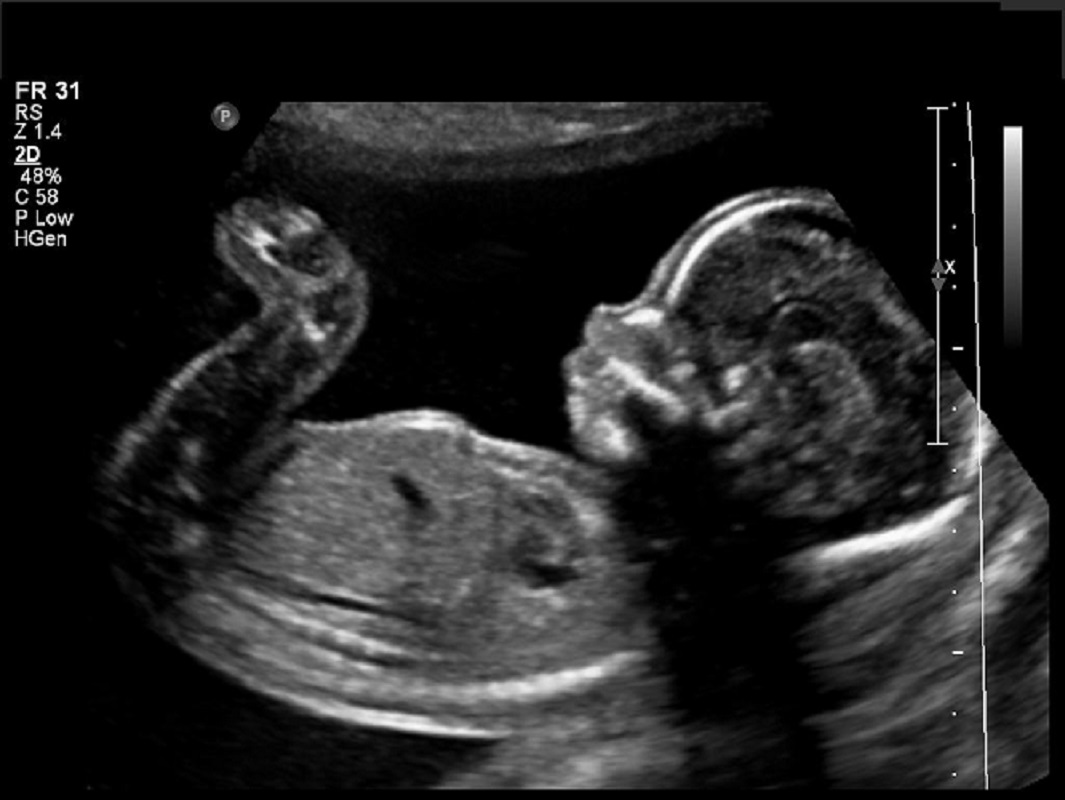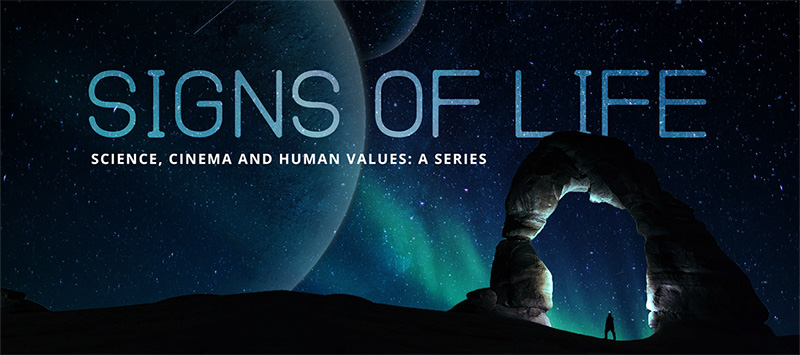The ACOG Should Reconsider Fetal Pain

By John C. Bockmann
This is Issue 65 of the On Point Series.
Can a fetus feel something like pain before viability, perhaps even by 15 weeks’ gestation? The American College of Obstetricians and Gynecologists (ACOG) says no, but increasing evidence suggests that the answer is yes.
Because medical personnel, media, legislators, and laypeople often rely on ACOG for accurate information, and because good practice and ethics begin with good facts, ACOG should update its “Facts are Important” statement on fetal pain accordingly.
Meanwhile, clinical procedures and public policy should reflect these updated findings. I’ll examine ACOG’s “Facts are Important” statement on fetal pain in light of what we know today, then make recommendations for changes to ACOG’s position.
Background
Stuart Derbyshire (DAR’bshr), a neuroscientist who co-wrote one of the two studies ACOG cited against fetal pain, changed his position in response to a growing body of evidence. He’s on record in the British Medical Journal (BMJ) calling fetal pain a “misnomer” and a “shoddy sentimental argument.” He’s written against the existence of fetal pain since 1994. But last year, Dr. Derbyshire and I published an article in the BMJ’s Journal of Medical Ethics postulating fetal pain experience “from as early as 12 weeks.”
What changed? A lot, actually.
For decades, most neuroscientists have operated by the axiom of what I call “cortical necessity.” This is the idea that a cerebral cortex—the thin, convoluted, outer layer of the brain that activates between 24 and 30 weeks’ gestation—is required to perceive pain.
There has long been evidence to the contrary. But accumulating studies, especially two from 2016, strongly imply that cortical necessity is incorrect: evidence shows subcortical (lower) brain structures that develop much earlier than 24 to 30 weeks are sufficient for pain perception.
Nevertheless, ACOG’s “Facts are Important” doesn’t reflect these studies and, except for a paragraph on President Trump and a paragraph oddly repeated at the end, it hasn’t changed since 2013.
Assumptions and conflicting references
ACOG cites two venerable studies for its position: The Royal College of Obstetricians and Gynaecologists’ 2010 report on fetal awareness (RCOG 2010), which Dr. Derbyshire co-wrote, and Lee and colleagues’ 2005 review on fetal pain, published in the Journal of the American Medical Association (JAMA 2005).
Though presented together, these studies disagree with each other and fail to substantiate their underlying assumption of cortical necessity.
To wit: JAMA 2005 found that fetal pain can only arise “around 29 to 30 weeks’ gestational age,” when neurons from the thalamus to the cortex apparently begin to function. Conversely, RCOG 2010 says that fetal pain cannot happen until 24 weeks, when these same neurons demonstrably function, or perhaps ever, due to what I discuss later as the “fetal sleep” hypothesis. These two papers differ in their conclusions by at least five to six weeks.
More importantly, both of these studies assume, but do not demonstrate, cortical necessity as the basis for their findings. RCOG 2010 does cite five studies in support of cortical necessity, but four of them have nothing to do with the topic, and one ambiguously supports the position. JAMA 2005 cites no evidence for it at all.
In short, ACOG’s own references disagree and are moot, because they assume, yet fail to demonstrate, cortical necessity.
Thus, ACOG’s “Facts are Important” is moot. By its own words, the advocacy statement cries out for an update: “Sound health policy is best based on scientific fact and evidence-based medicine.”
Subcortical structures suffice
Today, cortical necessity seems not only unconvincing but also incorrect. In fact, neuroscientists since the 1950s, including Wilder Penfield, Bjorn Merker, and KJS Anand, have hypothesized that pain can be mediated at the brainstem and thalamus alone. These subcortical structures are functional in the 12-week fetus.
More recently, studies from 2012 and 2016 demonstrated self- and pain-awareness in a middle-aged man, despite extensive damage to the supposed pain centers of his cortex. Another 2016 study, this one on subjects who were congenitally insensitive to pain, found that noxious stimuli activated these cortical pain centers, though the subjects felt no discomfort. These findings weaken the idea that the cortex is required to sense pain.
Moreover, even if the cortex is somehow truly necessary for pain perception, a sort of proto-cortex called the subplate seems to afford cortex-like sensory functions while the cortex is still forming. Subplate connections to peripheral nerves, via the thalamus, begin to form around 12 weeks.
What is RCOG 2010’s opinion on subcortical structures? They cannot produce “mature function,” it says—a term which it leaves undefined, but which apparently rules out any possibility of fetal pain. Likewise, “Interpretation of existing data indicates that cortical processing of pain perception, and therefore the ability of the fetus to feel pain, cannot occur before 24 weeks of gestation.”
As the late Martin Ward Platt observed in his 2011 critique, “We could rewrite this as ‘in theory they can’t feel pain, therefore they don’t.’”
Worse: in RCOG 2010’s opening summary, the authors wrote, “As most neuroscientists believe that the cortex is necessary for pain perception, it can be concluded that the fetus cannot experience pain in any sense prior to this gestation.”
Or as I would say, “They conclude that their conclusion can be concluded.” The rest of the report is apparently superfluous.
And what of RCOG’s fetal sleep hypothesis?
RCOG 2010 said fetal pain is not possible before 24 weeks, but also, it may be impossible at any gestation due to what I call their “fetal sleep” hypothesis. On this idea, adenosine and other signaling molecules in the amniotic fluid, plus the “warm, buoyant, and cushioned” uterine environment, induce an overwhelming, unwakeable sleepiness in the fetus.
Supporting this hypothesis, RCOG 2010 cited a study of fetal lambs with electroencephalogram (EEG) patterns interpreted as continuous sleep. And based on another study on fetal lambs observed for thousands of hours, RCOG 2010 inferred the lambs were always unconscious.
But while RCOG 2010 deemed extrapolation from fetal lambs to fetal humans to be “plausible”, it inexplicably cautioned against extrapolation from pain-capable, prematurely born human infants to human fetuses of the same gestational age.
Besides denying “the everyday experience of pregnancy”, mused Platt in his 2011 critique, the fetal sleep hypothesis contradicts the “extensive literature, in humans, on fetal sleep and wakefulness, fetal motility, fetal memory,” and so on, and “None of this work is easily reconciled with the notion of a permanently unconscious human fetus.”
As for those “fetal sleep” EEGs, Dr. Derbyshire says that upon closer inspection, they are not so clear. The EEGs have discrete spikes of activity that don’t exactly fit with sleep. Rather than sleep versus wakefulness, he suggests, it’s better to characterize these EEGs as a transition from one uncertain state to another.
Suggested Updates to ACOG’s “Facts Are Important”
Clearly, the ACOG’s references—one of which Stuart Derbyshire co-authored—are out of date. In fact, Dr. Derbyshire and I wrote Reconsidering Fetal Pain because compelling evidence contradicted the assumptions and findings of those references.
To communicate the evidence more accurately and preserve public trust, I recommend that ACOG promptly make at least the following revisions.
1. Current version: “A human fetus does not have the capacity to experience pain until after viability.”
Recommended change: “A human fetus may feel pain from as early as 12 weeks’ gestation.”
2. Current version: “Rigorous scientific studies have found that the connections necessary to transmit signals from peripheral sensory nerves to the brain…do not develop until at least 24 weeks of gestation.”
Recommended change: “An increasing number of scientific studies suggest that, contrary to our previous understanding, pain perception is mediated by structures that develop by 12 to 24 weeks.”
3. Current version: “Pain is ‘an emotional and psychological experience that requires conscious recognition of a noxious stimulus.’”
Recommended change: “Pain in human fetuses, as in nonhuman animals, need not be equivalent to adult human pain in order to matter morally. Both respond in every way as though they feel pain. Anesthesia, normally given to animals and human fetuses during surgery, calms these responses.”
4. Current version: “This capacity [for emotional and psychological experience of pain] does not develop until the third trimester at the earliest, well past the period between 20 weeks and viability.”
Recommended change: Remove this passage, as it’s not supported by the references provided.
5. Current version: “The evidence shows that the neural circuitry necessary to distinguish touch from painful touch does not, in fact, develop until late in the third trimester.”
Recommended change: Remove this passage, as it’s not supported by the references provided.
6. Current version: “The best health care is provided free of governmental interference in the patient-physician relationship.”
Recommended change: “While ACOG opposes frivolous healthcare legislation, no field is as thoroughly regulated—or needs to be—as healthcare. We strive for patient-centered transparency and accountability and welcome all thoughtful efforts to that end.”
This sentence should stay, however: “Sound health policy is best based on scientific fact and evidence-based medicine.”
I couldn’t agree more. Good practice and ethics begin with good facts. That’s why, as a trusted medical authority, ACOG should update its “Facts are Important” statement to acknowledge the possibility of fetal pain at 12 weeks’ gestation.
Meanwhile, clinical procedures and public policy should reflect these findings.
John C. Bockmann is a Guest Contributor at the Charlotte Lozier Institute.


























